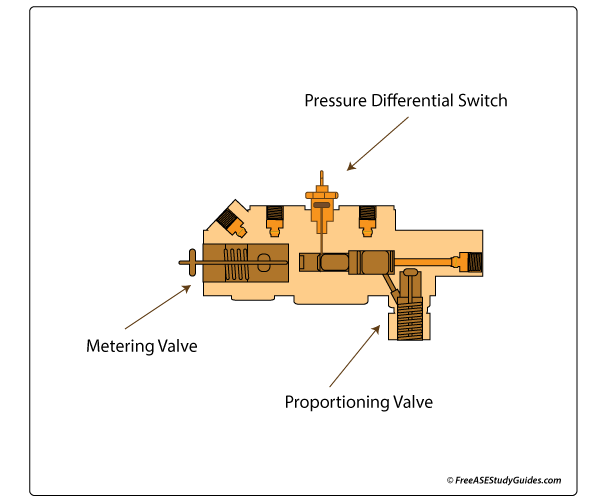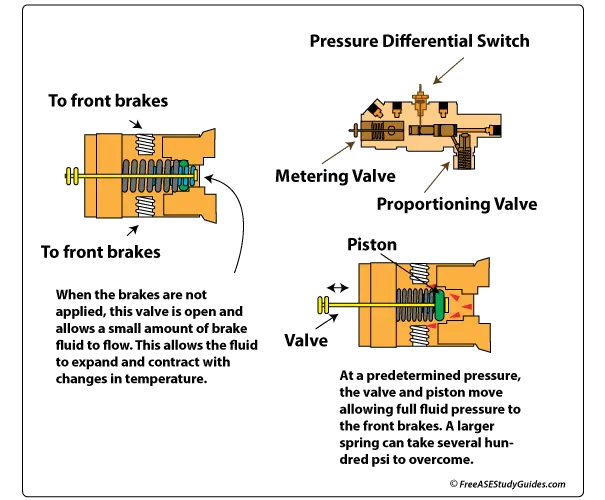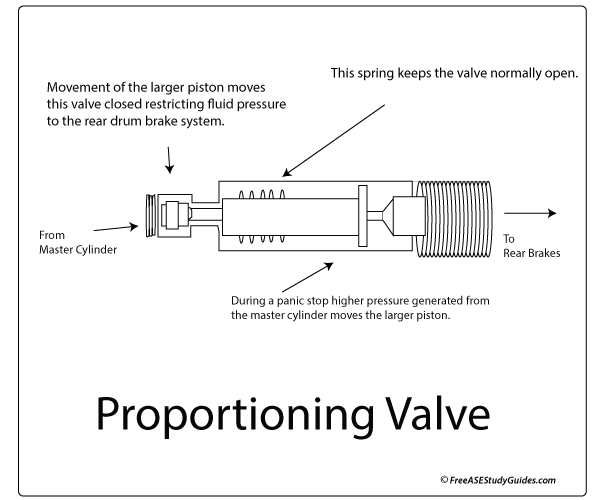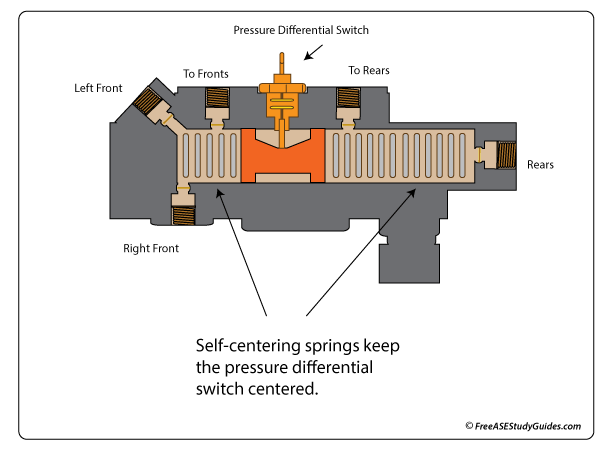Brake Combination Valve

A three-function combination valve contains the proportioning, metering, and pressure differential switch. It is in the engine compartment, fastened to the firewall.
Metering Valve:

The metering valve is in charge of delaying the application of the front brakes just long enough to overcome the rear brake springs. They help achieve balanced braking on vehicles with front disc rear drum brake systems. When the brakes are applied, hydraulic pressure quickly overcomes a spring in the valve and closes a port to the front brakes. It is in line with the front brakes and holds back pressure to the front calipers until enough pressure builds in the system. The rear brake pressure builds to a point (75-125 psi) that forces the valve open, allowing pressurized brake fluid to flow to the calipers and then applying the front brake. The vehicle nosedives when a metering valve fails because the front brakes apply early.
Proportioning Valve:

The proportioning valve is used to prevent rear-wheel lockup. These valves achieve balanced braking by reducing fluid flow and pressure to the rear brakes during hard and sudden stops. It activates only during hard and panicked stops. Most of the time, the valve lies dormant during light and moderate braking.
Pressure Differential Switch:

The pressure differential switch is used to inform the driver if there is a leak in the system. It is used in dual master cylinders to detect a difference in pressure between the two sides. If there is a pressure difference, the switch will complete the circuit and illuminate the red brake warning indicator lamp. A two-function combination valve omits either the metering valve or the proportioning valve.